new posts in all blogs
Viewing: Blog Posts Tagged with: candlewick, Most Recent at Top [Help]
Results 1 - 25 of 255
How to use this Page
You are viewing the most recent posts tagged with the words: candlewick in the JacketFlap blog reader. What is a tag? Think of a tag as a keyword or category label. Tags can both help you find posts on JacketFlap.com as well as provide an easy way for you to "remember" and classify posts for later recall. Try adding a tag yourself by clicking "Add a tag" below a post's header. Scroll down through the list of Recent Posts in the left column and click on a post title that sounds interesting. You can view all posts from a specific blog by clicking the Blog name in the right column, or you can click a 'More Posts from this Blog' link in any individual post.
Peppa Pig and the Day at Snowy Mountain. 2014. Candlewick. 32 pages. [Source: Review copy]
First sentence: Peppa and George wake up one day and look out the window. IT'S SNOWING! Hurrah! They can't wait to go outside.
Premise/plot: Peppa Pig and her family (Mummy, Daddy, and George) spend a LOVELY day on Snowy Mountain skiing, skating, and sledding. Adventures and misadventures are had by all. Many characters are there on the mountain too. (For example, Madame Gazelle, Miss Rabbit, etc.)
My thoughts: I enjoyed this one. If you have seen an episode or two of the television series you know exactly what kind of comedy to expect. Peppa sings a song. Mummy and Daddy pig end up covered in snow. And there's a lot of laughing. For example, when Peppa and George want to sled down the mountain but don't have a sled, Peppa decides that DADDY PIG makes a good sled. Away they go.
Overall, this one is worth the read IF you already love Peppa Pig.
Text: 4 out of 5
Illustrations: 3 out of 5
Total: 7 out of 10
© 2016 Becky Laney of
Becky's Book Reviews

By:
Becky Laney,
on 12/24/2016
Blog:
Becky's Book Reviews
(
Login to Add to MyJacketFlap)
JacketFlap tags:
review copy,
2016,
books reviewed in 2016,
2017 Cybils Eligible,
series books,
Shannon Hale,
J Fiction,
J Fantasy,
Candlewick,
early chapter book,
Add a tag
The Princess in Black. Shannon Hale. Illustrated by LeUyen Pham. 2016. Candlewick. 96 pages. [Source: Review copy]
First sentence: It was dawn. The Princess in Black had battled monsters all night. And so Princess Magnolia was tired.
Premise/plot: Fighting monsters keeps the Princess in Black (aka Princess Magnolia) exhausted, so when someone new THE GOAT AVENGER (aka Duff the Goat Boy) volunteers to fight monsters in her place, she hesitantly agrees to take a much-needed vacation. But will all go according to plan? Will the Goat Avenger face off with scary monsters? Will Princess Magnolia have a peaceful, relaxed, monster-free vacation AT THE BEACH?
My thoughts: The series is enjoyable. I love, love, love the illustrations. LeUyen Pham is my favorite and best. I adore her work. Shannon Hale's stories are nice. Are they thrilling for adult readers? Probably not. But I really like the characters--especially Princess Sneezewort--and don't mind the predictability and sameness.
(I think the all-caps are contagious.)
© 2016 Becky Laney of
Becky's Book Reviews
Lucky Lazlo. Steve Light. 2016. Candlewick. 32 pages. [Source: Review copy]
First sentence: Lazlo was in love. He bought a rose from the flower-seller. The last red one--how lucky!
Premise/plot: Lucky Lazlo follows the adventures--or misadventures--of a young man, Lazlo, in love. His love is starring in a play, Alice in Wonderland. In fact, she's the star of the show, Alice. The show is premiering on a Friday at the Peacock Theater. This picture book is a comedy. The simple act of buying a flower for the one you love becomes a chaotic, hilarious riot of a book. And it all starts with a CAT who snatches Lazlo's rose.
My thoughts: I thought this one was charming even before I read the author's note. But. After reading the author's note, it went from "really like" to LOVE. Light has taken a LOT of theater superstitions and woven together a story that uses just about all of them--for better or worse! And his illustrations are both simple and complex. His use of color is simple, understated. But his use of detail is very complex indeed.
Text: 5 out of 5
Illustrations: 5 out of 5
Total: 10 out of 10
© 2016 Becky Laney of
Becky's Book Reviews
Walk This World At Christmastime. Illustrated by Debbie Powell. 2016. Candlewick. 24 pages. [Source: Review copy]
First sentence: Walk this world at Christmastime. Let's take a stroll around the world, to all four corners of the globe. Peek through windows, open doors, watch as Christmastime unfolds.
Premise/plot: Readers "visit" many different countries at Christmastime. Each two-page spread takes readers to a new destination. The stops include Canada and the United States; Mexico, Bolivia, and Brazil; Nigeria, South Africa, and Ethiopia; Spain, France, Italy, and Greece; Holland, Austria, and Germany; U.K., Sweden, Norway, and Finland; Poland, Ukraine, and Russia; Lebanon, Iraq, Pakistan, and India; China, Japan, and the Philippines; Australia, New Zealand, and Samoa. Each two-page spread features a riddle, of sorts, asking readers to guess where they are. Each two spread also features a LOT of flaps to open. Behind each flap is a fact.
Some of the things we learn on this journey:
- During Las Posadas, children dress as Mary and Joseph and go from house to house asking to be let in.
- Leave out your shoes to get presents from the Three Wise Men.
- Calabar Carnival, in Nigeria, is Africa's biggest street party. Get ready for parades, masquerades, and dancing.
- An old Greek custom, recently revived, is to decorate real and model ships with lights at Christmastime.
- In Holland, leave out your clogs for Saint Nicholas. Don't forget a carrot for his horse!
- A Nutcracker doll is a traditional German gift.
- The first Christmas card was sent in the U.K. in 1843.
- In Russia, Father Frost brings children presents, accompanied by the Snow Maiden.
- In Iraq, Christian families light a bonfire and recite passages from the Bible.
- In India, banana trees are decorated for Christmas.
- The Chinese give gifts of apples on Christmas Eve.
- In Samoa, people feast on December 24, then go to church, dressed in white, on Christmas Day.
My thoughts: This one is packed with information. I definitely found it interesting. I'm not the biggest fan of lift-the-flap books. But I think this one works.
© 2016 Becky Laney of
Becky's Book Reviews
Hair. Leslie Patricelli. 2017. Candlewick. 26 pages. [Source: Review copy; board book]
First sentence: I have a hair. I take care of my hair.
Premise/plot: If you're not familiar with Leslie Patricelli's board books--especially if you're a parent with littles--you need to be. The star of this one will be a familiar face to those who have loved--or LOVED, LOVED, LOVED her delightful series. In this one, the baby will be getting a hair cut. Literally one hair cut.
My thoughts: I adore Leslie Patricelli's books. I do. This BABY has long been beloved. So it is great fun for me to see the release of two new books this year. (The Other is Nighty-Night.)
Definitely recommended for families with toddlers.
© 2016 Becky Laney of
Becky's Book Reviews
Bears and a Birthday. Shirley Parenteau. 2015. Candlewick. 32 pages. [Source: Review copy]
First sentence: The makings for a cake are there. The recipe's ready. Where are the bears?
Premise/plot: 4 small bears (Fuzzy, Floppy, Yellow, Calico) work together to create a surprise for Big Brown Bear on his birthday. Readers see the bear mixing, baking, frosting a cake as well as wrapping his birthday present. Big Brown Bear gets quite suspicious and wants to know what his friends are doing. But, of course, no peeking is allowed.
My thoughts: This one is cute and predictable. If your little one loves the other books in the series, this one is definitely worth picking up. It would also serve as a good introduction to the series. I don't think the books have to be read in any certain order!
Text: 3 out of 5
Illustrations: 4 out of 5
Total: 7 out of 10
© 2016 Becky Laney of
Becky's Book Reviews

By:
Betsy Bird,
on 11/17/2016
Blog:
A Fuse #8 Production
(
Login to Add to MyJacketFlap)
JacketFlap tags:
middle grade graphic novels,
Best Books of 2016,
2016 reviews,
Reviews 2016,
2017 Caldecott contenders,
2016 graphic novels,
2016 middle grade graphic novels,
Reviews,
graphic novels,
Matt Phelan,
Best Books,
Candlewick,
Add a tag
 Snow White: A Graphic Novel
Snow White: A Graphic Novel
By Matt Phelan
Candlewick Press
$19.99
ISBN: 978-0-7636-7233-1
Ages 9-12
On shelves now
I’d have said it couldn’t be done. The Snow White fairytale has been told and retold and overdone to death until there’s not much left to do but forget about it entirely. Not that every graphic novel out there has to be based on an original idea. And not that the world is fed up with fairytales now (it isn’t). But when I heard about Matt Phelan’s Snow White: A Graphic Novel I was willing to give it a chance simply because I trusted its creator and not its material. The crazy thing is that even before I picked it up, it threw me for a loop. I heard that the story was recast in 1920s/ early-1930s Depression-era New York City. For longer than I’d care to admit I just sort of sat there, wracking my brain and trying desperately to remember anything I’d ever seen that was similar. I’ve seen fairytales set during the Depression before, but never Snow White. Then I picked the book up and was struck immediately by how beautiful it was. Finally I read through it and almost every element clicked into place like the gears of a clock. I know Matt Phelan has won a Scott O’Dell Award for The Storm in the Barn and I know his books get far and wide acclaim. Forget all that. This book is his piece de resistance. A bit of fairytale telling, to lure in the kids, and a whole whopping dollop of cinematic noir, deft storytelling, and clever creation, all set against a white, wintery backdrop.
The hardened detective thinks he’s seen it all, but that was before he encountered the corpse in the window of a department store, laid out like she was sleeping. No one could account for her. No one except maybe the boy keeping watch from across the street. When the detective asks for the story he doesn’t get what he wants, but we, the readers, do. Back in time we zip to when a little girl lost her mother to illness and later her father fell desperately in love with a dancer widely proclaimed to be the “Queen of the Follies.” Sent away to a boarding school, the girl returns years later when her father has died and his will leaves all his money in a trust to Snow. Blinded by rage, the stepmother (who is not innocent in her husband’s death) calls in a favor with a former stagehand to do away with her pretty impediment, but he can’t do the deed. What follows is a gripping tale of the seven street kids that take Snow under their wing (or is it the other way around?), some stage make-up, a syringe, an apple, and an ending so sweet you could have gotten it out of a fairytale.
 Let’s get back to this notion I have that the idea of setting Snow White during the Depression in New York is original. It honestly goes above and beyond the era. I could swear I’d never read or seen a version where the seven dwarfs were seven street kids. Or where the evil stepmother was a star of the Ziegfeld Follies. Snow’s run from Mr. Hunt is through Central Park through various shantytowns and he presents the stepmother with a pig’s heart procured at a butcher. Even making her glass coffin a window at Macy’s, or the magic mirror an insidious ticker tape, feels original and perfectly in keeping with the setting. You begin to wonder how no one else has ever thought to do this before.
Let’s get back to this notion I have that the idea of setting Snow White during the Depression in New York is original. It honestly goes above and beyond the era. I could swear I’d never read or seen a version where the seven dwarfs were seven street kids. Or where the evil stepmother was a star of the Ziegfeld Follies. Snow’s run from Mr. Hunt is through Central Park through various shantytowns and he presents the stepmother with a pig’s heart procured at a butcher. Even making her glass coffin a window at Macy’s, or the magic mirror an insidious ticker tape, feels original and perfectly in keeping with the setting. You begin to wonder how no one else has ever thought to do this before.
You’d also be forgiven for reading the book, walking away, giving it a year, and then remembering it as wordless. It isn’t, but Phelan’s choosy with his wordplay this time. Always a fan of silent sequences, I was struck by the times we do see words. Whether it’s the instructions on the ticker tape (a case could easily be made that these instructions are entirely in the increasingly deranged step-mother’s mind), Snow’s speech about how snow beautifies everything, or the moment when each one of the boys tells her his name, Phelan’s judiciousness makes the book powerful time and time again. Can you imagine what it would have felt like if there had been an omniscient narrator? The skin on the back of my neck shudders at the thought.
For all that the words are few and far between, you often get a very good sense of the characters anyway. Snow’s a little bit Maria Von Trapp and a little bit Mary Poppins to the boys. I would have liked Phelan to give her a bit more agency than, say, Disney did. For example, when her step-mother informs her, after the reading of her father’s will, that her old room is no longer her own, I initially misread Snow’s response to be that she was going out to find a new home on her own. Instead, she’s just going for a walk and gets tracked down by Mr. Hunt in the process. It felt like a missed beat, but not something that sinks the ship. Contrast that with the evil stepmother. Without ever being graphic about it, not even once, this lady just exudes sex. It’s kind of hard to explain. There’s that moment when the old stagehand remembers when he once turned his own body into a step stool so that she could make her grand entrance during a show. There’s also her first entrance in the Follies, fully clothed but so luscious you can understand why Snow’s father would fall for her. The book toys with the notion that the man is bewitched rather than acting of his own accord, but it never gives you an answer to that question one way or another.
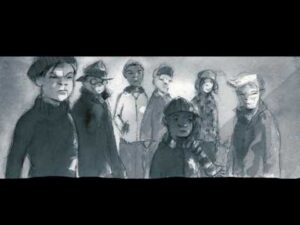 Lest we forget, the city itself is also a character. Having lived in NYC for eleven years, I’ve always been very touchy about how it’s portrayed in books for kids. When contemporary books are filled with alleyways it makes me mighty suspicious. Old timey fare gets a pass, though. Clever too of Phelan to set the book during the winter months. As Snow says at one point, “snow covers everything and makes the entire world beautiful . . . This city is beautiful, too. It has its own magic.” So we get Art Deco interiors, and snow covered city tops seen out of huge plate glass windows. We get theaters full of gilt and splendor and the poverty of Hoovervilles in the park, burning trashcans and all. It felt good. It felt right. It felt authentic. I could live there again.
Lest we forget, the city itself is also a character. Having lived in NYC for eleven years, I’ve always been very touchy about how it’s portrayed in books for kids. When contemporary books are filled with alleyways it makes me mighty suspicious. Old timey fare gets a pass, though. Clever too of Phelan to set the book during the winter months. As Snow says at one point, “snow covers everything and makes the entire world beautiful . . . This city is beautiful, too. It has its own magic.” So we get Art Deco interiors, and snow covered city tops seen out of huge plate glass windows. We get theaters full of gilt and splendor and the poverty of Hoovervilles in the park, burning trashcans and all. It felt good. It felt right. It felt authentic. I could live there again.
We live in a blessed time for graphic novels. With the recent win of what may well be the first graphic novel to win a National Book Award, they are respected, flourishing, and widely read. Yet for all that, the graphic novels written for children are not always particularly beautiful to the eye. Aesthetics take time. A beautiful comic is also a lot more time consuming than one done freehand in Photoshop. All the more true if that comic has been done almost entirely in watercolors as Phelan has here. I don’t think that there’s a soul alive who could pick up this book and not find it beautiful. What’s interesting is how Phelan balances the Art Deco motifs with the noir-ish scenes and shots. When we think of noir graphic novels we tend to think of those intensely violent and very adult classics like Sin City. Middle grade noir is almost unheard of at this point. Here, the noir is in the tone and feel of the story. It’s far more than just the black and white images, though those help too in their way.
 The limited color palette, similar in many ways to The Storm in the Barn with how it uses color, here invokes the movies of the past. He always has a reason, that Matt Phelan. His judicious use of color is sparing and soaked with meaning. The drops of blood, often referred to in the original fairytale as having sprung from the queen’s finger when she pricked herself while sewing, is re-imagined as drops of bright red blood on a handkerchief and the pure white snow, a sure sign of influenza. Red can be lips or an apple or cheeks in the cold. Phelan draws scenes in blue or brown or black and white to indicate when you’re watching a memory or a different moment in time, and it’s very effective and easy to follow. And then there’s the last scene, done entirely in warm, gentle, full-color watercolors. It does the heart good to see.
The limited color palette, similar in many ways to The Storm in the Barn with how it uses color, here invokes the movies of the past. He always has a reason, that Matt Phelan. His judicious use of color is sparing and soaked with meaning. The drops of blood, often referred to in the original fairytale as having sprung from the queen’s finger when she pricked herself while sewing, is re-imagined as drops of bright red blood on a handkerchief and the pure white snow, a sure sign of influenza. Red can be lips or an apple or cheeks in the cold. Phelan draws scenes in blue or brown or black and white to indicate when you’re watching a memory or a different moment in time, and it’s very effective and easy to follow. And then there’s the last scene, done entirely in warm, gentle, full-color watercolors. It does the heart good to see.
The thing about Matt Phelan is that he rarely does the same story twice. About the only thing you can count on with him is that he loves history and the past. Indeed, between showing off a young Buster Keaton ( Bluffton) and a ravaged Dust Bowl setting (The Storm in the Barn) it’s possible “Snow White” is just an extension of his favorite era. As much a paean to movies as it is fairytales and graphic novels, Phelan limits his word count and pulls off a tale with truly striking visuals and killer emotional resonance. I don’t think I’ve ever actually enjoyed the story of Snow White until now. Hand this book to graphic novel fans, fairytale fans, and any kid who’s keen on good triumphing over evil. There might be one or two such children out there. This book is for them.
On shelves now.

Board Book: There, There. Taro Miura. 2016. Candlewick. 22 pages. [Source: Review copy]
First sentence: Frog says, "Ribbit, ribbit!" Chicken says, "Cluck, cluck!"
Premise/plot: This may at first appear to be a simple, predictable book. (I think of Bing Bong, Riley's imaginary friend!!!) But it has a twist. After the baby goes "wah, wah!" the animals, well, they mix things up a bit! Can the baby restore order in the world?!
My thoughts: I LOVE the twist in this one. It is probably still a little on the predictable side. (The title may just provide the solution.) But it is FUN. It is newly translated into English this year.
Text: 4 out of 5
Illustrations: 4 out of 5
Total: 8 out of 10
© 2016 Becky Laney of
Becky's Book Reviews
Board Book: Bum, Bum. Taro Miura. 2016. Candlewick. 24 pages. [Source: Review copy]
First sentence: Duck's fluffy...bum bum. Pig's round....bum bum. Elephant's big...bum bum.
Premise/plot: I will be the first to admit that this one is a little lacking in plot. (Not every board book has a plot. Many don't, in fact. So it's not an automatic fail.) It is super-predictable as well. Little ones see a LOT of bums. Mostly animal bums. But also a toddler bum bum there at the end--both diapered and un. If you have a little one that giggles gleefully about bums and buttoms, then, this one may be worth sharing.
My thoughts: It was okay. To be honest, it takes more than the sight of a bum to make me giggle. I am not the target audience for this!!! I think this may be a more subjective book!
Text: 3 out of 5
Illustrations: 3 out of 5
Total: 6 out of 10
© 2016 Becky Laney of
Becky's Book Reviews
We Found A Hat. Jon Klassen. 2016. Candlewick. 56 pages. [Source: Review copy]
First sentence: We found a hat. We found it together. But there is only one hat. And there are two of us.
Premise/plot: Jon Klassen is very, very, very, very, very popular. But he has a very, very, very, very, very odd sense of humor. This is the third 'hat' book. (Three picture books with 'hat' in the title. But different characters, different hats, as far as I can recall.) This picture book is about what happens when two very good friends want the same hat.
My thoughts: Well, I'll be honest. I read it three or four times through and the confusion hasn't left me. I could pretend that I "get" this book. I could join in with those saying that it's oh-so-wonderful and one of the best books ever. I could use the excuse that I don't want to spoil the book for anyone else by talking about it. Or the excuse that it was so good it left me speechless. But I won't. I don't think that you should have to read a picture book a dozen times to "get" the brilliance of the 'twist' ending. The other two books were odd but understandable. This one? Not so much.
Text: 3 out of 5
Illustrations: 3 out of 5
Total: 6 out of 10
© 2016 Becky Laney of
Becky's Book Reviews
Raymie Nightingale. Kate DiCamillo. 2016. Candlewick. 272 pages. [Source: Review copy]
First sentence: There were three of them, three girls. They were standing side by side. They were standing at attention.
Premise/plot: Set in 1975, in Florida, Raymie Nightingale is middle grade novel about everything and nothing all at the same time.
Three girls--Raymie Clarke, Beverly Tapinski, Louisiana Elefante--become the Three Rancheros one summer. Technically, these three are brought together by a couple of 'obvious' things: they are all in a baton-twirling class, they all will be competing in a Little Miss Central Florida Tire competition. One of the questions on the application asks each girl to LIST their good deeds on a separate piece of paper. But the obvious reasons these three belong together aren't the 'real' reasons. Each girl knows something of loss, of longing, of regret, of 'the real world.'
Raymie's quest to do a good deed so she can write it down leads to the start of a not-so-wonderful, wonderful summer. Her good deed--to read to the elderly about FLORENCE NIGHTINGALE--goes horribly wrong. One patient REFUSES to listen, and her spur-of-the-moment good deed to answer the lonely cries of another patient causes her to DROP HER BOOK--HER LIBRARY BOOK--IN A PANICKED DASH.
Raymie seeks help from Louisiana and Beverly....and in return, she pledges to help them.
My thoughts: LOVED THIS ONE. I'm not sure it's BECAUSE OF WINN DIXIE all kinds of magical. But that is because I loved, loved, loved, LOVED that one so very much. It's a GREAT book though. And I really enjoyed all three girls. I really found myself loving Louisiana and her grandmother most of all. I'm not sure why. I just do. Maybe it was Louisiana's duck barrettes? Maybe it was her hope? I don't know. But I love her fiercely. I think I love all three girls actually.
I was confused for the first few chapters, but, eventually everything clicked into place and it was LOVE.
I wouldn't mind a movie adaptation.
© 2016 Becky Laney of
Becky's Book Reviews
To Stay Alive. Skila Brown. 2016. Candlewick. 304 pages. [Source: Review copy]
First sentence: It is finished.
Premise/plot: I've got two sets of 'two words' that will either compel you to pick this one up or to avoid it. For better or worse. First: DONNER PARTY. Second: VERSE NOVEL.
Mary Ann Graves is the narrator of this historical verse novel. She was nineteen at the start of the journey in the spring of 1846. This one is divided into seasons: spring, summer, fall, winter. Almost all of the poems involve the traveling west and surviving aspect of the pioneer spirit. The landscape and environment do feature in quite a bit. Especially the SNOW.
What this book is not is Little House On the Prairie. This isn't even THE LONG WINTER. People do have tendencies to group books together. That is why I think it is important that DONNER PARTY leap out at you first before you hear of wagon trains, prairies, pioneers, homesteaders, or going west.
My thoughts: There is a bareness to the poems that oddly enough works for me. The narrator does not wear her heart on her sleeve. She's not overly dramatic and sensitive. She doesn't speak of her dreams and feelings and there is absolutely no gushing. (She's no Ann-with-an-e Shirley.)
When I say the poems avoid gushing, I don't mean they are void of description and detail.
The men think they're/ following a trail, a road/ well marked by wheels/ and feet, like a street,/ pointing you/ in the direction you need/ to go. But I know./ We follow a trail of broken things/ tossed from wagons--family heirlooms/ so heavy with memories/ the oxen couldn't pull--/ quilts, spinning wheels, dishes (too much/ dust to see the pattern), wooden bits,/ once part of something rich,/ portraits of great-grandmothers/ who'll spend eternity in the desert,/ watching beasts pull treasures/ while dirty people trail behind.
Some poems are long, descriptive. Others are very short and bare.
this land/ has eaten/ my feet/ chewed them/ ripped them/ cut them/ they bleed/ into land/ that drinks/ them up/ but it is never full
I am so glad I did not read anything about the Donner party as a child when I was obsessed with Laura Ingalls!!!
© 2016 Becky Laney of
Becky's Book Reviews

By:
Betsy Bird,
on 10/18/2016
Blog:
A Fuse #8 Production
(
Login to Add to MyJacketFlap)
JacketFlap tags:
international children's books,
Juana Medina,
Best Books of 2016,
2016 reviews,
Reviews 2016,
2016 early chapter books,
Reviews,
Best Books,
Candlewick,
Latino children's books,
early chapter books,
Add a tag
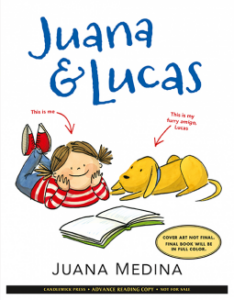 Juana and Lucas
Juana and Lucas
By Juana Medina
Candlewick Press
$14.99
ISBN: 978-1-7636-7208-9
Ages 6-9
On shelves now
Windows. Mirrors. Mirrors. Windows. Windowy mirrors. Mirrory windows. Windows. Mirrors. Sliding doors! Mirrors. Windows.
In the world of 21st century children’s literature, diversity should be the name of the game. We want books for our children that reflect the worlds they know and the worlds they have yet to greet. We want them to see themselves in their books (mirrors), see others unlike themselves (windows), and have a way to get from one place to another (sliding doors). To accomplish this, all you have to do is publish a whole bunch of books about kids of different races, religions, abilities, persuasions, you name it. Great strides have been made over the last few years in the general consciousness of the publishing industry (the publishers, the librarians, the teachers, and even the parents) even as teeny tiny, itty bitty, itsy bitsy tiptoes have been made in terms of what actually is getting published. Much of the credit for spearheading efforts to bring to light more and more books for all children can be given to the We Need Diverse Books movement. That said, our children’s rooms are still filled with monumental gaps. Contemporary Jewish characters are rare. Muslim characters rarer still. And don’t even TALK to me about the state of kids in wheelchairs these days. Interestingly enough, the area where diversity has increased the most is in early chapter books. Whether it’s Anna Hibiscus, Lola Levine, Alvin Ho, or any of the other new and interesting characters out there, there is comfort to be found in those books that transition children from easy readers to full-blown novels. Into this world comes Juana Medina and her semi-autobiographical series Juana & Lucas. Short chapters meet universal headaches (with details only available in Bogota, Colombia) ultimately combining to bring us a gal who will strike you as both remarkably familiar and bracingly original.
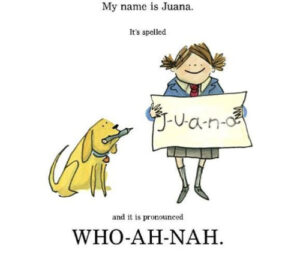 You might think that Juana has it pretty good, and for the most part you’d be right. She lives in Bogota, Colombia “the city that’s closest to my heart” with her Mami. She has a good furry best friend (her dog, Lucas) and a good not-so-furry best friend (Juli). And hey, it’s the first day of school! Cool, right? Only nothing goes the way Juana planned. The whole unfortunate day is capped off when one of her teachers informs the class that they will be learning “the English” this year. Could anything be more unfair? Yet as Juana searches for sympathy amongst her friends and relatives, she realizes that everyone seems to think that learning English is a good thing. Are they crazy? It isn’t until an opportunity comes up to visit somewhere fantastic, far away, and English speaking that she finally takes what everyone has told her to heart. In a big way.
You might think that Juana has it pretty good, and for the most part you’d be right. She lives in Bogota, Colombia “the city that’s closest to my heart” with her Mami. She has a good furry best friend (her dog, Lucas) and a good not-so-furry best friend (Juli). And hey, it’s the first day of school! Cool, right? Only nothing goes the way Juana planned. The whole unfortunate day is capped off when one of her teachers informs the class that they will be learning “the English” this year. Could anything be more unfair? Yet as Juana searches for sympathy amongst her friends and relatives, she realizes that everyone seems to think that learning English is a good thing. Are they crazy? It isn’t until an opportunity comes up to visit somewhere fantastic, far away, and English speaking that she finally takes what everyone has told her to heart. In a big way.
I love, first and foremost, the fact that the emotional crux of this book is fixated on Juana’s detestation of learning “the English”. Now already I’ve heard some commenters online complain that Juana’s problem isn’t something that English-speaking children will identify with. Bull. Any child that has ever learned to read will know where Juana is coming from. What English speaker would fail to sympathize when she asks, “Why are read and read written the same way but sound different? How can I know when people are talking about eyes or ice when they sound about the same? And what about left hand and left the room? So many words, so little sense”? Some kids reading this book may have experience learning another language too. For them, Juana’s complaints will ring true and clear. That’s a key aspect of her personality. She’s sympathetic, even when she’s whining.
For all that we’ve seen books like Juana’s, Lola Levine, Zapato Power, Pedro, First Grade Hero, Sophia Martinez, and a handful of others, interestingly this increase in Latino early chapter book is relatively recent. For a long time it was Zapato Power or nothing. The change is great, but it’s significant to note that all the books I’ve mentioned here are set in the United States. American books set in South American countries where the kids just live their daily lives and don’t have to deal with civil wars or invasions or coyotes or drug runners are difficult to find. What makes Juana and Lucas so unique is that it’s about a child living her life, having the kinds of problems that Ramona or Ruby Lu or Dyamonde Daniel could relate to. And like Anna Hibiscus or The Great Cake Mystery I love books for younger children that go through daily life in other present day countries. Windows indeed.
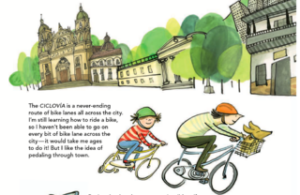 Early chapter books are interesting because publishers see them as far more series-driven than their writers might. An author can crank out title after title after title to feed the needs of their young readers, always assuming the demand is there, and they can do it easier with books under 100 pages than above. Juana could fit the bill in this regard. Her personality is likable, for starters. She’s not rude like Junie B. Jones or willfully headstrong in the same way as Ramona, but she does screw up. She does complain wildly. There are aspects of her personality you can identify with right from the start. I’d be pleased to see more of her in the future, and young readers will undoubtedly feel the same way. Plus, she has one particular feature that puts her heads and tails above a lot of the competition: She’s in color.
Early chapter books are interesting because publishers see them as far more series-driven than their writers might. An author can crank out title after title after title to feed the needs of their young readers, always assuming the demand is there, and they can do it easier with books under 100 pages than above. Juana could fit the bill in this regard. Her personality is likable, for starters. She’s not rude like Junie B. Jones or willfully headstrong in the same way as Ramona, but she does screw up. She does complain wildly. There are aspects of her personality you can identify with right from the start. I’d be pleased to see more of her in the future, and young readers will undoubtedly feel the same way. Plus, she has one particular feature that puts her heads and tails above a lot of the competition: She’s in color.
Created in ink and watercolor, Medina illustrates as well as writes her books. This art actually puts the book in a coveted place few titles can brag. You might ask if there’s a middle point between easy books and, say, Magic Tree House titles. I’d say this book was it. Containing a multitude of full-color pictures and spreads, it offers kids the comfort of picture books with the sensibility and sophistication of chapter book literature. And since she’s already got the art in place, why not work in some snazzy typography as well? Medina will often integrate individual words into the art. They swoop and soar around the characters, increasing and decreasing in size, according to their wont. Periodically a character will be pulled out and surrounded by fun little descriptor tidbits about their personage in a tiny font. Other times sentences move to imitate what their words say, like when Juana discusses how Escanilberto can kick the ball, “hard enough to send it across the field.” That sentence moves from his foot to a point just above his opponent’s head, the ball just out of reach. I like to think this radical wordplay plays into the early reader’s enjoyment of the book. It’s a lot more fun to read a chapter book when you have no idea what the words are going to pull on you next.
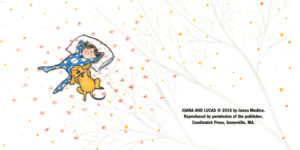 The writing is good, though the conclusion struck me as a bit rushed. Admittedly the solution to Juana’s problems is tied up pretty quickly. She won’t learn, she won’t learn, she won’t learn. She gets to have a prize? She studies and studies and studies. So rather than have her come to an understanding of English’s use on her own, an outside force (in this case, the promise of seeing Astroman) is the true impetus to her change. Sure, at the very end of the book she suddenly hits on the importance of learning other languages and visiting other places around the globe but it’s a bit after the fact. Not a big problem in the book, of course, but it would have been cool to have Juana come to this realization without outside influences.
The writing is good, though the conclusion struck me as a bit rushed. Admittedly the solution to Juana’s problems is tied up pretty quickly. She won’t learn, she won’t learn, she won’t learn. She gets to have a prize? She studies and studies and studies. So rather than have her come to an understanding of English’s use on her own, an outside force (in this case, the promise of seeing Astroman) is the true impetus to her change. Sure, at the very end of the book she suddenly hits on the importance of learning other languages and visiting other places around the globe but it’s a bit after the fact. Not a big problem in the book, of course, but it would have been cool to have Juana come to this realization without outside influences.
As nutty as it sounds, Juana and Lucas is a bit short on the “Lucas” side of that equation. Juana’s the true star of the show here, relegating man’s best friend to the sidelines. Fortunately, I have faith in this series. I have faith that it will return for future sequels and that when those sequels arrive they’ll have a storyline for Lucas to carry on his own. With Juana nearby, of course. After all, she belongs to the pantheon of strong female early chapter characters out there, ready to teach kids about life in contemporary Colombia even as she navigates her own trials and successes. And it’s funny. Did I mention it’s funny? You probably got that from context, but it bears saying. “Juana and Lucas” is the kind of book I’d like to see a lot more of. Let’s hope Ms. Medina is ready to spearhead a small revolution of early chapter book international diversity of her very own.
On shelves now.
Like This? Then Try:

Peppa Pig and the Little Train. 2016. Candlewick. 32 pages. [Source: Review copy]
First sentence: Peppa and George are visiting Granny and Grandpa Pig. Bang! Crash! Bang! Bang! "What's that noise?" asks Peppa. "Grandpa Pig is building a surprise for you," says Granny Pig.
Premise/plot: The book is an adaptation of a television episode of Peppa Pig. In this book, Peppa and George are surprised with Gertrude, a miniature locomotive made by their Grandpa. Soon, all their friends are riding Gertrude as well. One of the refrains of the book is that Gertrude is NOT a toy.
My thoughts: I LOVE this episode very much. But the book adaptation leaves a little to be desired. Not only has it been Americanized, but the lyrics to GRANDPA'S LITTTLE TRAIN SONG has been changed for no reason whatsoever. In the TV episode, Grandpa's little train goes CHOO, CHOO, CHOO. In the book, it goes CHUG, CHUG, CHUG. I don't expect the book to include the full song--it has multiple verses after all. But to not get the chorus right is just annoying. Any parent and child who KNOW the show, are going to KNOW the words to the "real song" and want to know WHY the book gets it wrong.
Text: 3 out of 5
Illustrations: 3 out of 5
Total: 6 out of 10
© 2016 Becky Laney of
Becky's Book Reviews
Trains: A Pop-Up Railroad. Robert Crowther. 2016. Candlewick Press. 10 pages. [Source: Review copy]
First sentence: Locomotives. The first trains were just linked mining wagons pulled by human or horse power, used to carry coal and mineral ores back in sixteenth century Europe. The invention of the first powered locomotive in the early nineteenth century revolutionized the way a train moved.
Premise/plot: This is POP-UP book celebrating trains. It is an interactive book. Trains don't just pop-up on a few pages. There are flaps to lift and tabs to pull as well. Above all else, this one is packed with very detailed information.
Did You Know?
- That Richard Trevithick built the first working steam locomotive in 1804.
- That British trains began carrying passengers in 1829 and American trains began carrying passengers in 1830.
- That Dr. Rudolf Diesel built the first diesel engine in 1897.
- That George Pullman introduced the first luxury sleeping cars in 1865.
- That the fastest steam locomotive is/was the Mallard. It set the record in 1938 with 126 mph. The record has never been broken...by another steam train.
- That the fastest train these days is the Japanese train, Maglev. It can go up to 374 mph!
My thoughts: I liked this one. I'm not a huge train enthusiast. But I know many people--of all ages--are. I think this one is a good and fun resource to have. It isn't so much a narrative to read aloud--there isn't a proper story. But it is a resource: plenty of definitions, explanations, illustrations, and such.
© 2016 Becky Laney of
Becky's Book Reviews

By:
Betsy Bird,
on 9/26/2016
Blog:
A Fuse #8 Production
(
Login to Add to MyJacketFlap)
JacketFlap tags:
Reviews,
Best Books,
Candlewick,
middle grade historical fiction,
Anne Nesbet,
Best Books of 2016,
2016 reviews,
Reviews 2016,
2016 middle grade fiction,
2017 Newbery contenders,
2016 middle grade historical fiction,
Add a tag
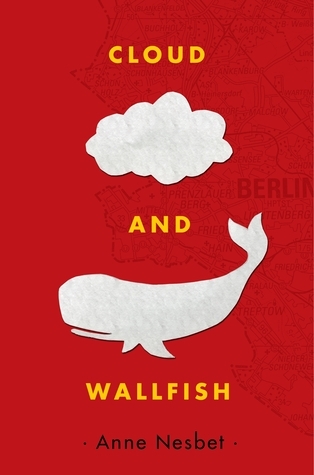 Cloud and Wallfish
Cloud and Wallfish
By Anne Nesbet
Candlewick Press
$16.99
ISBN: 978-0-7636-8803-5
Ages 9-12
On shelves now
Historical fiction is boring. Right? That’s the common wisdom on the matter, certainly. Take two characters (interesting), give them a problem (interesting), and set them in the past (BOOOOOORING!). And to be fair, there are a LOT of dull-as-dishwater works of historical fiction out there. Books where a kid has to wade through knee-deep descriptions, dates, facts, and superfluous details. But there is pushback against this kind of thinking. Laurie Halse Anderson, for example, likes to call her books (Chains, Forge, Ashes, etc.) “historical thrillers”. People are setting their books in unique historical time periods. And finally (and perhaps most importantly) we’re seeing a lot more works of historical fiction that are truly fun to read. Books like The War That Saved My Life by Kimberly Brubaker Bradley, or One Crazy Summer by Rita Williams-Garcia, or My Near-Death Adventures by Alison DeCamp, or ALL of Louise Erdrich’s titles for kids. Better add Cloud and Wallfish by Anne Nesbet to that list as well. Doing what I can only characterize as the impossible, Nesbet somehow manages to bring East Germany in 1989 to full-blown, fascinating life. Maybe you wouldn’t want to live there, but it’s certainly worth a trip.
His name is Noah. Was Noah. It’s like this, one minute you’re just living your life, normal as you please, and the next your parents have informed you that your name is a lie, your birth date is wrong, and you’re moving to East Berlin. The year is 1989 and as Noah (now Jonah)’s father would say, there’s a definite smell of history in the air. His mother has moved the family to this new city as part of her research into education and stuttering (an impediment that Noah shares) for six months. But finding himself unable to attend school in a world so unlike the one he just left, the boy is lonely. That’s why he’s so grateful when the girl below his apartment, Claudia, befriends him. But there are secrets surrounding these new friends. How did Claudia’s parents recently die? Why are Noah’s parents being so mysterious? And what is going on in Germany? With an Iron Curtain shuddering on its foundations, Noah’s not just going to smell that history in the air. He’s going to live it, and he’s going to get a friend out of the bargain as well.
It was a bit of a risk on Nesbet’s part to begin the book by introducing us to Noah’s parents right off the bat as weirdly suspicious people. It may take Noah half a book to create a mental file on his mom, but those of us not related to the woman are starting our own much sooner. Say, from the minute we meet her. It was very interesting to watch his parents upend their son’s world and then win back his trust by dint of their location as well as their charm and evident love. It almost reads like a dare from one author to another. “I bet you can’t make a reader deeply distrust a character’s parents right from the start, then make you trust them again, then leave them sort of lost in a moral sea of gray, but still likable!” Challenge accepted!
Spoiler Alert on This Paragraph (feel free to skip it if you like surprises): Noah’s mom is probably the most interesting parent you’ll encounter in a children’s book in a long time. By the time the book is over you know several things. 1. She definitely loves Noah. 2. She’s also using his disability to further her undercover activities, just as he fears. 3. She incredibly frightening. The kind of person you wouldn’t want to cross. She and her husband are utterly charming but you get the distinct feeling that Noah’s preternatural ability to put the puzzle pieces of his life together is as much nature as it is nurture. Coming to the end of the book you see that Noah has sent Claudia postcards over the years from places all over the world. Never Virginia. One could read that a lot of different ways but I read it as his mother dragging him along with her from country to country. There may never be a “home” for Noah now. But she loves him, right? I foresee a lot of really interesting bookclub discussions about the ending of this book, to say nothing about how we should view his parents.
As I mentioned before, historical fiction that’s actually interesting can be difficult to create. And since 1989 is clear-cut historical fiction (this is the second time a character from the past shared my birth year in a children’s book . . . *shudder*) Nesbet utilizes several expository techniques to keep young readers (and, let’s face it, a lot of adult readers) updated on what precisely is going on. From page ten onward a series of “Secret Files” boxes will pop up within the text to give readers the low-down. These are written in a catchy, engaging style directly to the reader, suggesting that they are from the point of view of an omniscient narrator who knows the past, the future, and the innermost thoughts of the characters. So in addition to the story, which wraps you in lies and half-truths right from the start to get you interested, you have these little boxes of explanation, giving you information the characters often do not have. Some of these Secret Files are more interesting than others, but as with the Moby Dick portions in Louis Sachar’s The Cardturner, readers can choose to skip them if they so desire. They should be wary, though. A lot of pertinent information is sequestered in these little boxes. I wouldn’t cut out one of them for all the wide wide world.
Another way Nesbet keeps everything interesting is with her attention to detail. The author that knows the minutia of their fictional world is an author who can convince readers that it exists. Nesbet does this by including lots of tiny details few Americans have ever known. The pirated version of The Wonderful Wizard of Oz that was disseminated for years throughout the German Democratic Republic? I had no idea. The listing of television programs available there? Very funny (did I mention the book is funny too?). Even the food you could get in the grocery store and the smell of the coal-choked air feels authentic.
Of course, you can load your book down with cute boxes and details all day and still lose a reader if they don’t relate to the characters. Noah could easily be reduced to one of those blank slate narrators who go through a book without a clear cut personality. I’m happy to report that this isn’t the case here. And I appreciated the Claudia was never a straight victim or one of those characters that appears impervious to the pain in her life. Similarly, Noah is a stutterer but the book never throws the two-dimensional bully in his path. His challenges are all very strange and unique to his location. I was also impressed by how Nesbet dealt with Claudia’s German (she makes up words or comes up with some Noah has never heard of and so Nesbet has the unenviable job of making that clear on the page). By the same token, Noah has a severe stutter, but having read the whole book I’m pretty sure Nesbet only spells the stutter out on the page once. For every other time we’re told about it after the fact or as it is happening.
I’ve said all this without, somehow, mentioning how lovely Nesbet’s writing is. The degree to which she’s willing to go deep into her material, plucking out the elements that will resonate the most with her young readers, is masterful. Consider a section that explains what it feels like to play the role of yourself in your own life. “This is true even for people who aren’t crossing borders or dealing with police. Many people in middle school, for instance, are pretending to be who they actually are. A lot of bad acting is involved.” Descriptions are delicious as well. When Claudia comes over for dinner after hearing about the death of her parents Nesbet writes, “Underneath the bristles, Noah could tell, lurked a squishy heap of misery.”
There’s little room for nuance in Nesbet’s Berlin, that’s for sure. The East Berliners we meet are either frightened, in charge, or actively rebelling. In her Author’s Note, Nesbet writes about her time in the German Democratic Republic in early 1989, noting where a lot of the details of the book came from. She also mentions the wonderful friends she had there at that time. Noah, by the very plot in which he finds himself, would not be able to meet these wonderful people. As such, he has a black-and-white view of life in East Berlin. And it’s interesting to note that when his classmates talk up the wonders of their society, he never wonders if anything they tell him is true. Is everyone employed? At what price? There is good and bad and if there is nuance it is mostly found in the characters like Noah’s mother. Nesbet herself leaves readers with some very wise words in her Author’s Note when she says to child readers, “Truth and fiction are tangled together in everything human beings do and in every story they tell. Whenever a book claims to be telling the truth, it is wise (as Noah’s mother says at one point) to keep asking questions.” I would have liked a little more gray in the story, but I can hardly think of a better lesson to impart to children in our current day and age.
In many way, the book this reminded me of the most was Katherine Paterson’s Bridge to Terabithia. Think about it. A boy desperate for a friend meets an out-of-the-box kind of girl. They invent a fantasyland together that’s across a distinct border (in this book Claudia imagines it’s just beyond the Wall). Paterson’s book was a meditation on friendship, just like Nesbet’s. Yet there is so much more going on here. There are serious thoughts about surveillance (something kids have to think about a lot more today), fear, revolution, loyalty, and more than all this, what you have to do to keep yourself sane in a world where things are going mad. Alice Through the Looking Glass is referenced repeatedly, and not by accident. Noah has found himself in a world where the rules he grew up with have changed. As a result he must cling to what he knows to be true. Fortunately, he has a smart author to help him along the way. Anne Nesbet always calls Noah by his own name, even when her characters don’t. He is always Noah to us and to himself. That he finds himself in one of the most interesting and readable historical novels written for kids is no small thing. Nesbet outdoes herself. Kids are the beneficiaries.
On shelves now.
Source: Galley sent from publisher for review.
Like This? Then Try:
Professional Reviews:

By: Stacy Dillon,
on 9/25/2016
Blog:
Welcome to my Tweendom
(
Login to Add to MyJacketFlap)
JacketFlap tags:
Friendship,
cats,
summer,
Historical Fiction,
neglect,
Candlewick,
elderly,
copy from publisher,
2016,
Add a tag
I was a kid running wild and free in the 1970s, and I find myself intrigued with the fiction written these days that takes place during that time period. It's a convenient time period, for sure. By this I mean that technology hadn't yet tethered us to our parents, and I'm assuming that most kids were like my sister and I -- running around the neighborhood and beyond with friends and coming home when we got hungry.
Raymie is a girl who isn't really noticed much by her parents. Her father has actually just up and left with a dental hygienist and Raymie's mom is spending her time staring into space. Raymie finds some comfort in neighbor Mrs. Borkowski who seems to know everything and always has time to talk to Raymie. She has also hatched a plan to get her father to come home.
Raymie has decided that she will enter and win the Little Miss Central Florida Tire 1975 pageant. This will result in her picture in the newspaper. Her dad will be so proud of her, he'll have to come home. When Raymie tells her dad's secretary her plan, Mrs. Sylvester says Ramie just has to learn to twirl the baton as her talent. This is how she ends up at Ida Nee's place for twirling lessons along with Beverly Tapinski and Louisiana Elefante -- two girls who couldn't be more different from one another.
Louisiana is a wheezy and delicate girl, prone to swooning, while Beverly is the tough talking daughter of a cop who swears that she's seen things. In between these two, Raymie Clarke is a steadfast girl just doing her best to understand others.
Over the next few days, Louisiana dubs their trio the Rancheros, and even though Beverly refuses to live by the moniker, it becomes clear that Louisiana often gets her way. As the girls search for Louisiana's beloved cat, perform good deeds, experience loss, and do a little breaking and entering along the way, they slowly reveal their worries to one another. They become tied together by the brokenness that surrounds them.
As always, DiCamillo leaves poetry on the page. But this book felt different to me. I was talking to a colleague about it and I noted that it felt like it had a big dose of Horvath in the pages. Some have said the girls are too quirky and almost derivative. I disagree. When you look closely, kids are weird. And if they allow themselves to be honest with who they are, Beverlys and Louisianas and Raymies are completely reasonable. Trying to mend neglect with toughness or fantasy is innately human. I really enjoyed this quiet and quirky summery read. I do wonder at today's kids sitting with the 1975 setting. I'm interested in their feedback.

By:
Becky Laney,
on 9/14/2016
Blog:
Becky's Book Reviews
(
Login to Add to MyJacketFlap)
JacketFlap tags:
family,
J Fiction,
Candlewick,
J Realistic Fiction,
MG Fiction,
review copy,
MG Realistic Fiction,
2016,
books reviewed in 2016,
Add a tag
Applesauce Weather. Helen Frost. Illustrated by Amy June Bates. 2016. 112 pages. [Source: Review copy]
First sentence: Today is the day I've been waiting for: the first apple fell from the tree.
Premise/plot: Faith and Peter love, love, LOVE applesauce weather. When the apples are ready to pick from the family's apple tree. Uncle Arthur comes and tells stories--thousands of stories--and it's the best time ever. This year, there's some question though if he will come at all. Though Faith--aptly named Faith--never wavers in her belief that he will come. This year will be the first time for making applesauce WITHOUT Aunt Lucy. Uncle Arthur is still deeply mourning the love of his life. Lucy was someone he knew since he was a child, his best friend and soul mate. Will he come? Will he still tell stories? Or will he be too sad?
My thoughts: I LOVE, LOVE, LOVE this one. Dare I say it's more than practically perfect in every way, that, it is in fact actually perfect in every way?! I love Faith and Peter. I do. I love Uncle Arthur. I love seeing Arthur interact with his great-niece and great-nephew. I love how Arthur tells true stories--of him and Lucy--and more fanciful tales as well. (For example, how he lost his finger.) I love seeing authentic family moments.
It is a verse novel. But Helen Frost excels in this genre. Her verses resonate. One never feels that her verses are chopped up prose. At least I never feel that way. I suppose I should be careful generalizing!
Here's a verse from Uncle Arthur's perspective:
Here comes an old memory
walking down the road,
like a peddler
pushing a heavy load.
I'll walk out to meet him,
see what he has to sell--
a hammer, and a pound
of two-inch nails,
a cooking pot, and
a new tin pail.
Somewhere in the mix,
I might have found
the beginning of a strange
new tale to tell. (48)
© 2016 Becky Laney of
Becky's Book Reviews
A Child of Books. Oliver Jeffers. 2016. Candlewick Press. 40 pages. [Source: Review copy]
First sentence: I am a child of books. I come from a world of stories and upon my imagination I float.
Premise/plot: Books are celebrated in Oliver Jeffers' newest picture book. The illustrations are both simple and complex. Many illustrations feature a young girl and boy. Most pages also feature illustrations crafted out of the text of many, many books. For example, a path is created using the text of Alice's Adventures in Wonderland. Or a mountain is created using the text of Peter Pan and Wendy. Or tree branches are created using the text of several fairy tales. Each two-page spread is well-worth an adult's time.
My thoughts: I really liked this one. The narrative itself is beautiful, definitely poetic. I think the narrative is simple enough that it could work as a read aloud for almost any age. (Well, maybe not babies and toddlers and preschoolers with almost nonexistent attention spans.) The illustrations add a lot of depth and complexity. This element would probably be lost for a group read aloud, but, perhaps preserved in reading one on one with a child. Adults could definitely spend a LOT of time looking carefully at every single page. If you've read a lot, you may recognize phrases from the illustrations that 'jump' out at you.
Text: 5 out of 5
Illustrations: 4 out of 5
Total: 9 out of 10
© 2016 Becky Laney of
Becky's Book Reviews
Snow White. Matt Phelan. 2016. Candlewick. 216 pages. [Source: Review copy]
First sentence: What's the story here? Who is she?
Premise/plot: Those questions are asked by a New York City detective as he examines a crime scene--or potential crime scene at a department store. They provide the framework for Matt Phelan's newest graphic novel, Snow White. The book is a retelling of the traditional tale set in America, in New York City, for the most part, during the Depression.
Instead of an evil Queen of a stepmother, Samantha White (aka Snow) has dealings with the Queen of the Follies. Her stepmother being a Broadway star, a Ziegfeld girl. Instead of seven dwarfs, Snow is saved by THE SEVEN, a gang of street children.
My thoughts: I like this one a lot. I really enjoyed his artwork. I thought while both story and illustration were on the simple, understated side, it worked well for me. While the setting makes this one unique, the story is traditional. No further characterization has been done--for better or worse. I didn't mind this. As I said, it worked for me. I don't have to have "new" and "modern" twists and turns and complications for me to like a fairy tale retelling.
© 2016 Becky Laney of
Becky's Book Reviews

By:
Becky Laney,
on 8/15/2016
Blog:
Becky's Book Reviews
(
Login to Add to MyJacketFlap)
JacketFlap tags:
friendship,
J Fiction,
J Fantasy,
Candlewick,
Animal fantasy,
early chapter book,
review copy,
2016,
books reviewed in 2016,
Add a tag
Mango & Bambang: The Not a Pig. Polly Faber. Illustrated by Clara Vulliamy. 2016. Candlewick. 144 pages. [Source: Review copy]
First sentence: Mango Allsorts was good at all sorts of things. That was not the same as being good, but she was that, too. Most of the time.
Premise/plot: Readers meet Mango and her new pet tapir, Bambang. In their first adventure together, "Mango and the Muddle," Mango discovers the not-a-pig tapir causing a lot of traffic problems. She recognizes him for what he is--a tapir and NOT A PIG. And she 'saves' the day, if you will, by removing him from the scene and taking him home with her. Since her father is both there and not-there, the two become quite close. There are four adventures in all. The other three being: "Bambang's Pool," "Bambang Puts On a Hat," and "The Song of the Tapir."
My thoughts: Loved this one. I did. It had a good chance of winning me at hello what with the purple stripes and the purple end pages. The illustrations by Clara Vulliamy were just adorable and perfectly complemented Polly Faber's text. I would definitely recommend this one.
© 2016 Becky Laney of
Becky's Book Reviews
The Disappearance of Ember Crow. Ambelin Kwaymullina. 2016. Candlewick. 432 pages. [Source: Review copy]
The Disappearance of Ember Crow is the middle book in a trilogy by Ambelin Kwaymullina. The series is The Tribe. How to categorize it? Let's see, definitely post-apocalyptic with supernatural, mystical elements. So if you enjoy world-building, whether science-fiction or fantasy, this series may prove to your liking.
First things first. Can it stand alone? Do you need to have read The Interrogation of Ashala Wolf? It does not stand alone in my opinion. I read the first book and absolutely loved it. It was such a wonderful surprise of a book. So in my opinion, why not recommend starting with the first book when the first book is so GOOD?!?!
With a title like "The Disappearance of Ember Crow," anyone can deduce that Ashala's close friend, Ember, is going to disappear! Essentially, the book is about Ashala and Daniel...and a new character, Jules, setting out to find Ember and rescue her if she needs it.
A good deal of world-building occurs in this one. Enough is left a MYSTERY that readers aren't quite sure what will ultimately happen in the series. But readers can probably predict that Ashala and Daniel's quest to locate Ember will be successful and that these friends will meet again.
Did I enjoy this one as much as the first book? Honestly, probably not, but I am partly to blame for that. I read the first book in two days. Maybe three. I read this sequel in about four weeks. It just could NOT compete with my rereading of The Lord of the Rings. Daniel and Ashala just could not compete with Aragorn, Sam, and Gandalf.
Would I recommend this series? Yes. Just don't pick up this series at the exact same time as LOTR!!! It deserves your full attention.
© 2016 Becky Laney of
Becky's Book Reviews
Shrunken Treasures. Scott Nash. 2016. Candlewick. 40 pages. [Source: Review copy]
Love picture books? Love literature? Love the idea of loving literature? Shrunken Treasures might be just right for you. Here's why: Scott Nash has condensed nine literary works into verse 'for children.' (I'm not absolutely convinced that this one is truly for children, and that it will be appreciated by children.) Am I convinced that it can and will be appreciated by adults? It's much easier to say YES to that one.
So which books are condensed?
- The Odyssey
- Frankenstein
- Moby-Dick
- Jane Eyre
- A Thousand and One Nights
- Hamlet
- Don Quixote
- The Metamorphosis
- Remembrance of Things Past
I believe two of these can be sung to nursery rhyme tunes. Not all were written with singing in mind. The shortest of the condensed works is Remembrance of Things Past.
How "useful" are these condensed stories? (I mean "useful" for students wanting to avoid reading the originals for their school assignments.) Not very! But I'm not complaining about that...at all. Hamlet, for example, is about a dog--a Great Dane--with a habit of digging holes. A Thousand and One Nights stars a tiger and a mouse. Don Quixote covers about one or possibly two chapters of a very, very long novel.
I enjoyed this one. I didn't love, love, love it. I think one thing that kept me from loving it was the fact that I didn't really "like" the illustrations.
© 2016 Becky Laney of
Becky's Book Reviews
The Interrogation of Ashala Wolf. Ambelin Kwaymullina. 2014. Candlewick. 383 pages. [Source: Library]
I loved The Interrogation of Ashala Wolf. I did. (I didn't expect to 'love' it. I didn't know a lot about it going into it, hadn't read a thousand gushing reviews or anything. I would rather be surprised by how good a book is than be disappointed in how bad it is. So my thinking: always try to keep expectations moderately low.)
What you should know: 1) It is YA speculative fiction. I'd say somewhere between dystopian and post-apocalyptic. Post-apocalyptic because it is set hundreds of years after 'the reckoning' that almost destroyed the planet and wiped out humanity. Dystopian because of the ordered--often cruel--society or government that has restructured the world. So if you like or love either genre, then you should pick this one up. 2) It is complex--purposefully, strategically structured to keep you always guessing and a bit unsure. Some people love this, I think; some people don't. I enjoyed it very much! 3) The premise is simple perhaps to make up for the complex storytelling and intense plot. The premise? Well, some people are born with special powers or abilities. These abilities manifest themselves over time, so, you essentially grow into your power/ability. Strength (intensity/power) and control (ability to direct, use at will) vary from person to person. These people are labeled 'illegal' and are targeted by the government. 4) The book is about the conflict between Illegals and the Powers That Be. Questioning Authority and Being True To Yourself are some of the themes explored. 5) I love the world-building. Not everything is explained upfront, and, I love that about it. I don't think everything should be revealed from page one. I like the mystery and suspense and the gradual unfolding of how things are as you orient yourself to Ashala's world. It almost is better because it is slow and gradual. 6) The characterization. Like the world-building, characters aren't nicely introduced in a telling, usual way.
Ashala Wolf is one of the leaders of the tribe, a group of Illegals living in the Firstwood, living on their own as far away from society as they can get. Firstwood is a unique, fantastical setting. I never quite pictured or imagined it fully, but, that didn't stop me from loving this one. It didn't feel "less real" because of that. It almost felt "more real." In the opening chapter, readers learn that she has been captured, perhaps even betrayed by the boy, the young man, that she can't help being drawn to. She's essentially a prisoner at a detention camp, and, because she's a leader, and a defiant leader at that, she most likely is facing torture.
Actually, The Interrogation of Ashala Wolf reminded me of first season Alias. There's intensity, action, and confusion all at the same time. I could just as easily compare it to LOST or Once Upon A Time. You may not know everything you want to know, but, you know just enough to know you want more, more, MORE.
© 2016 Becky Laney of
Becky's Book Reviews
Interrupting Chicken. David Ezra Stein. 2010. Candlewick. 40 pages. [Source: Review copy]
First sentence: It was bedtime for the little red chicken.
Premise/plot: Little Red Chicken wants her Papa to read her a bedtime story. She promises to not interrupt. She promises to be good. But. Little Red Chicken can't help getting involved in the stories and interrupting. The stories she interrupts? Hansel and Gretel, Little Red Riding Hood, and Chicken Little. After three attempts at a bedtime story, she's still not asleep. What are they to do?!
My thoughts: I LOVE, LOVE, LOVE this one. I do. I love seeing Little Red Chicken interrupt the stories. I love the story that Little Red Chicken writes to "read" to her Papa. I love the last few pages of this one especially. I think the illustrations are great fun.
Text: 5 out of 5
Illustrations: 4 out of 5
Total: 9 out of 10
© 2016 Becky Laney of
Becky's Book Reviews
View Next 25 Posts




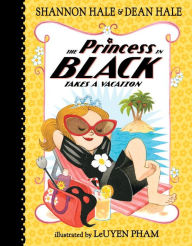


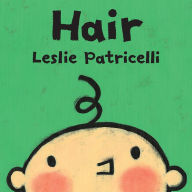














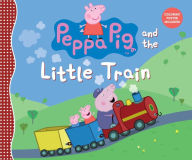




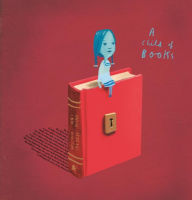
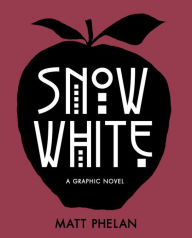




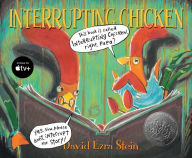
So glad you called this to my attention. It’s stunning. And I loved it that she didn’t just leave her 7 helpers behind in the end. Never liked that part of other versions. And I also loved the poetic justice of the evil stepmother’s end.
Here’s my predicament. At Annie Blooms Books we have it with the fairy tales–a logical spot, but I wonder if it would do better in young graphic novels or even MG fiction.
Graphic novels would be my thinking, though NYPL just released their 2016 books list and it was categorized under “Fairy Tales” so I might be alone in this. But surely it’ll get more use with the comics.
I just came across this online – I haven’t seen the actual book. Have you?
https://www.amazon.com/Snow-White-York-Fiona-French/dp/0192722107/ref=tmm_pap_swatch_0?_encoding=UTF8&qid=&sr=
Boy. Okay, yeah I did once. Back when I worked in the Donnell Central Children’s Room. But it wasn’t in very good condition and I don’t think I ever looked inside the front cover. Good find!